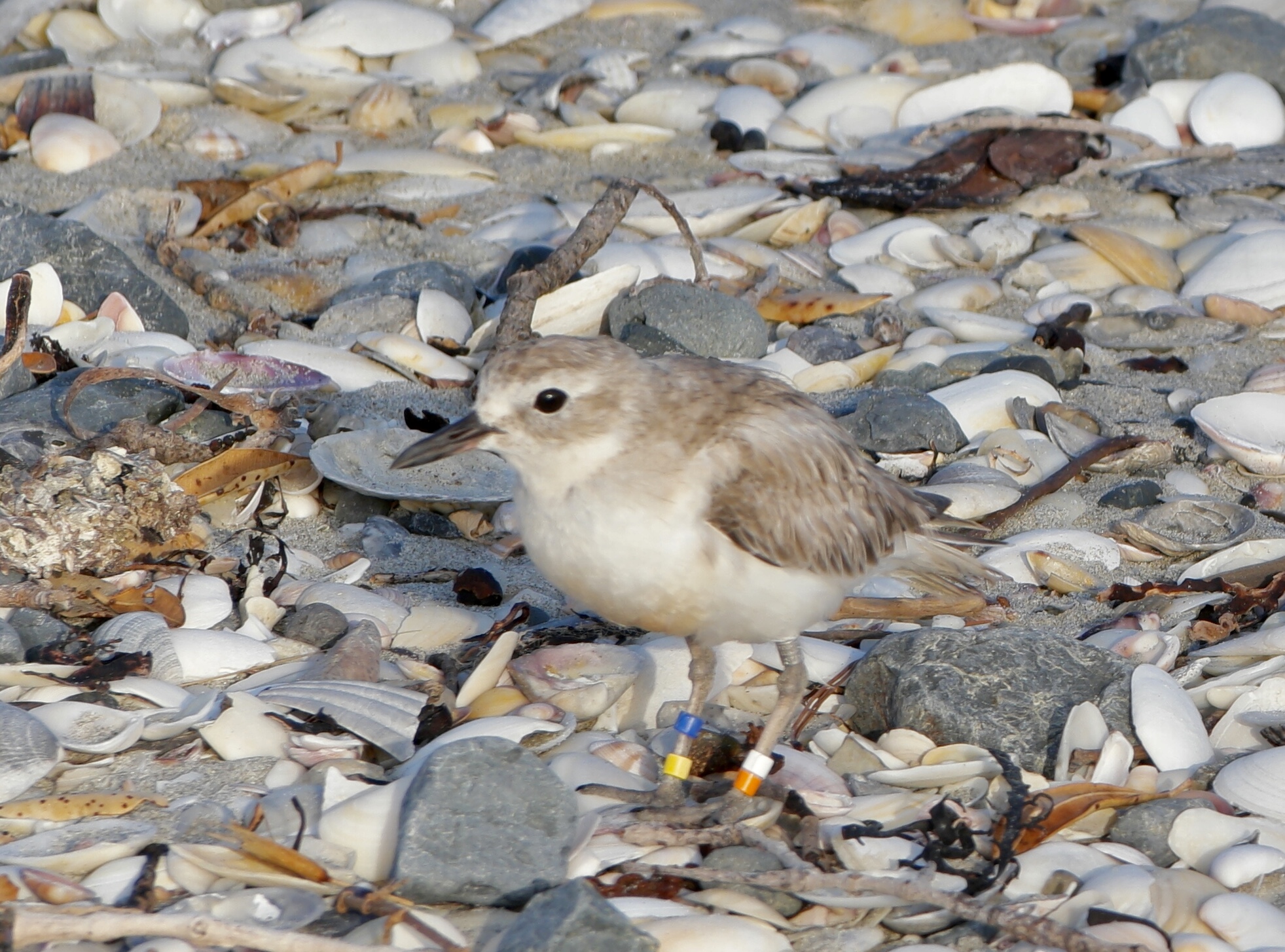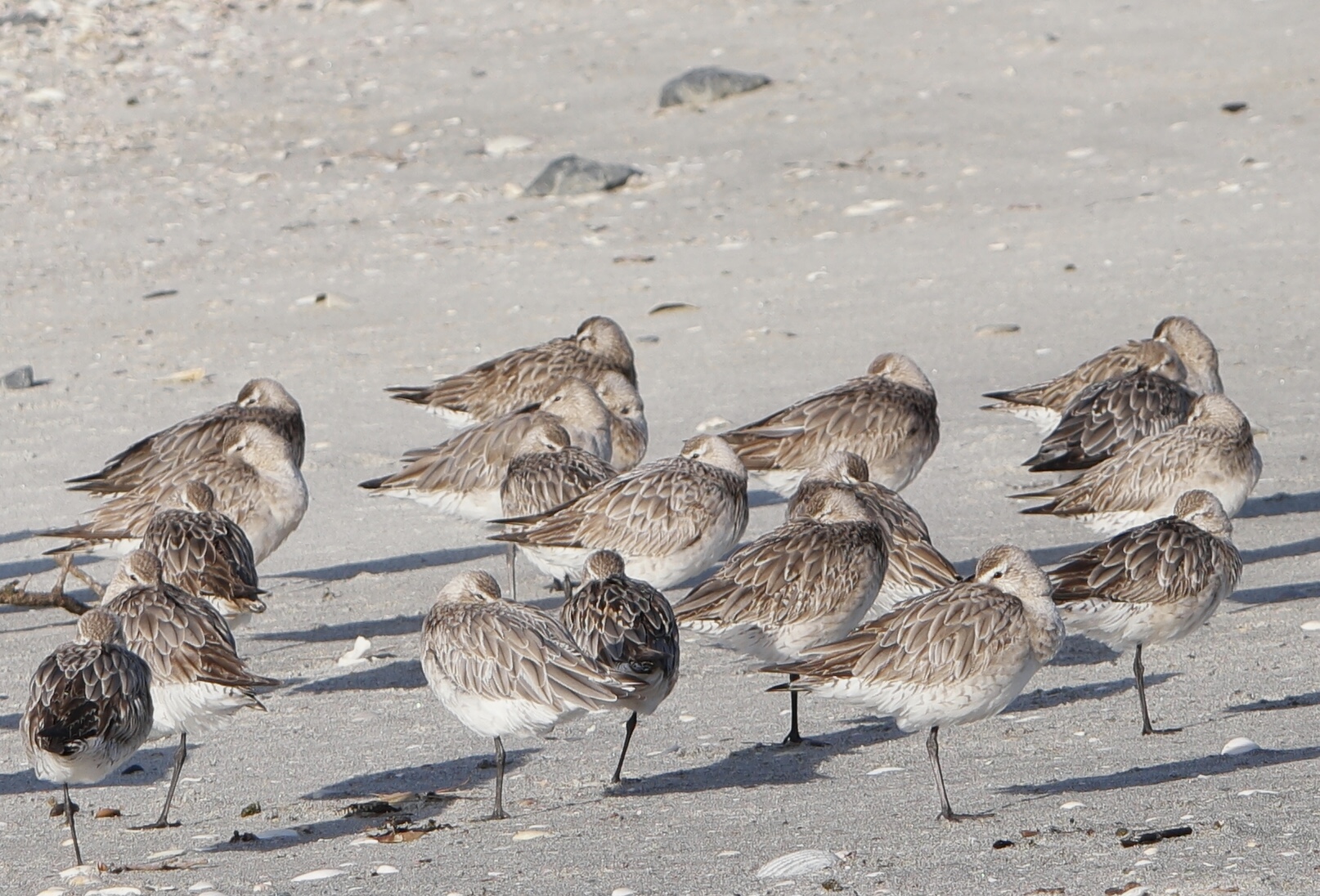Further to the article from the Omaha Shorebird Protection Trust in the 2022 OBC Newsletter, here is more information about the Omaha Shorebird Sanctuary:
Officially known as the Omaha North Reserve but usually called the Shorebird Sanctuary, this is a priceless asset of the Omaha community. We are indeed lucky to share the beautiful environment with these unusual and in some cases endangered New Zealand birds.
During the summer, from September to February, the Northern New Zealand dotterels and variable oystercatchers are nesting and raising their chicks. The nests consist of a simple scrape in the sand or shells and may contain up to 3 eggs. The nesting areas are defined by orange tape fences but often the dotterels make nests outside the fences and even outside the sanctuary on the main Omaha beach, so tread carefully and watch out for any birds behaving defensively. Dotterels will feign injury and try to lure you away from the nest while oystercatchers will mount a noisy attack to try and drive you away. At these times when the birds are away from the nests the eggs are vulnerable to predation by seagulls and hawks. Nests close to the high tide line are also vulnerable to storm surges which can wash them away. Birds that lose their eggs can re-lay up to 4 times in a season.
Eggs, chicks and adult birds are also vulnerable to predation by introduced mammals. The Pest-proof Fence, which was installed in 2012, backed up with intensive trapping, has been effective in eliminating rats, hedgehogs, stoats and weasels. However domestic and feral cats are known to enter the sanctuary along the shoreline on the estuary side and they have been detected by automatic trail cameras mounted at the western end of the fence and within the sanctuary. Last summer the bodies of several adult dotterels and oystercatcher chicks were examined and found to have been killed by a cat. The prime suspect was a black cat with white paws and no tail which was eventually trapped and eliminated. It is most important that all cats at Omaha are kept inside at night, are well fed, and carry identification. Dogs are totally banned from the sanctuary.
Other shorebirds which can be seen at Omaha include the bar-tailed godwits which nest in Alaska and migrate to New Zealand during the summer. The godwits arrive in September after the amazing non-stop flight of 11,000km, taking 9 days and losing up to 50% of their weight. They rest on the beach for 24 hours while their digestive organs regenerate and then they start to feed on the mud flats of the Whangateau Harbour at low tide, resting on the sanctuary beach at high tide. It is important not to disturb them at this time. In March they will have regained their strength ready for the flight back to Alaska via the Yellow Sea where they have a refuelling stop so they are in good breeding condition when they arrive. Juvenile godwits make the migration to New Zealand at only 2 months old but stay here for a couple of years until they reach breeding age, so there are always a few here during the winter. Last winter was exceptional in that up to 45 godwits were seen here.
If you are particularly observant you may see New Zealand’s most endangered bird, the fairy tern, of which there are only about 40 left. Their main breeding site is at Mangawhai but with a pair often seen at Omaha we hope that they may start nesting here as well. You may also see the larger Caspian terns which have a nesting area on a shell bank in the Whangateau Harbour and the common white-fronted terns resting on the rock groynes. During the winter months we see migrants from the South Island, the pied oystercatchers, banded dotterels and wrybills.
The 2019/2020 breeding season was not good at Omaha, with only 2 variable oystercatchers and 3 dotterels fledged. This was partly due to the predation noted above but also due to the impact of increasing human activity in the sanctuary which prevents the chicks from going to the shoreline to feed. Dotterel and oystercatcher chicks are not fed by their parents like most birds. They are guided to the water’s edge and shown what to do, then they must find their own food. People picnicking and playing on the beach prevent the chicks feeding, leading to starvation. During the recent Labour Weekend we observed several groups of visitors with tents, awnings, barbeques, beach chairs and ball games. If we are serious about conservation of the shorebirds at Omaha we are going to have to change this behaviour. There is 3 km of glorious beach at Omaha for picnics, sunbathing and games. If you are visiting the sanctuary, please follow the rules, walk slowly along the water’s edge at low tide, look out for the birds, keep your distance and do not linger. We have also experienced other forms of undesirable behaviour, including night time set netting, a bonfire in which Council signs were destroyed and 2 trail cameras stolen.
If you would like to support the Omaha Shorebird Protection Trust by donations, by volunteering or to report problems please contact us: [email protected]









